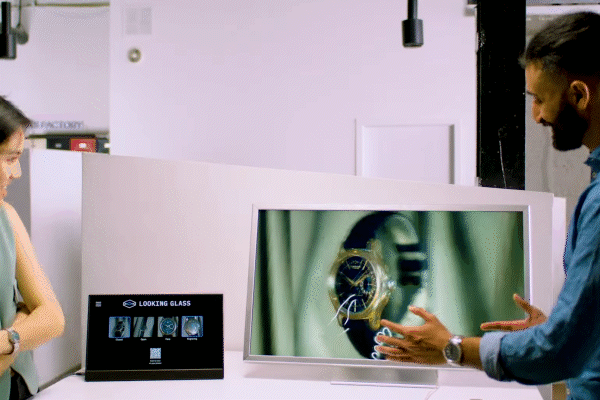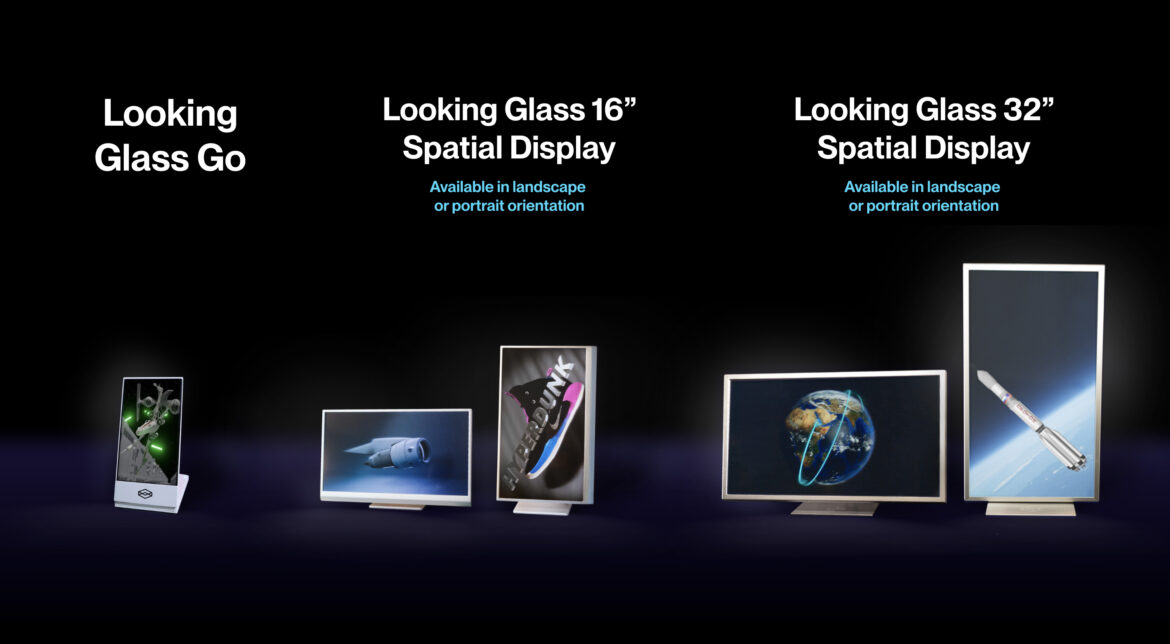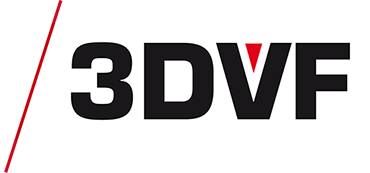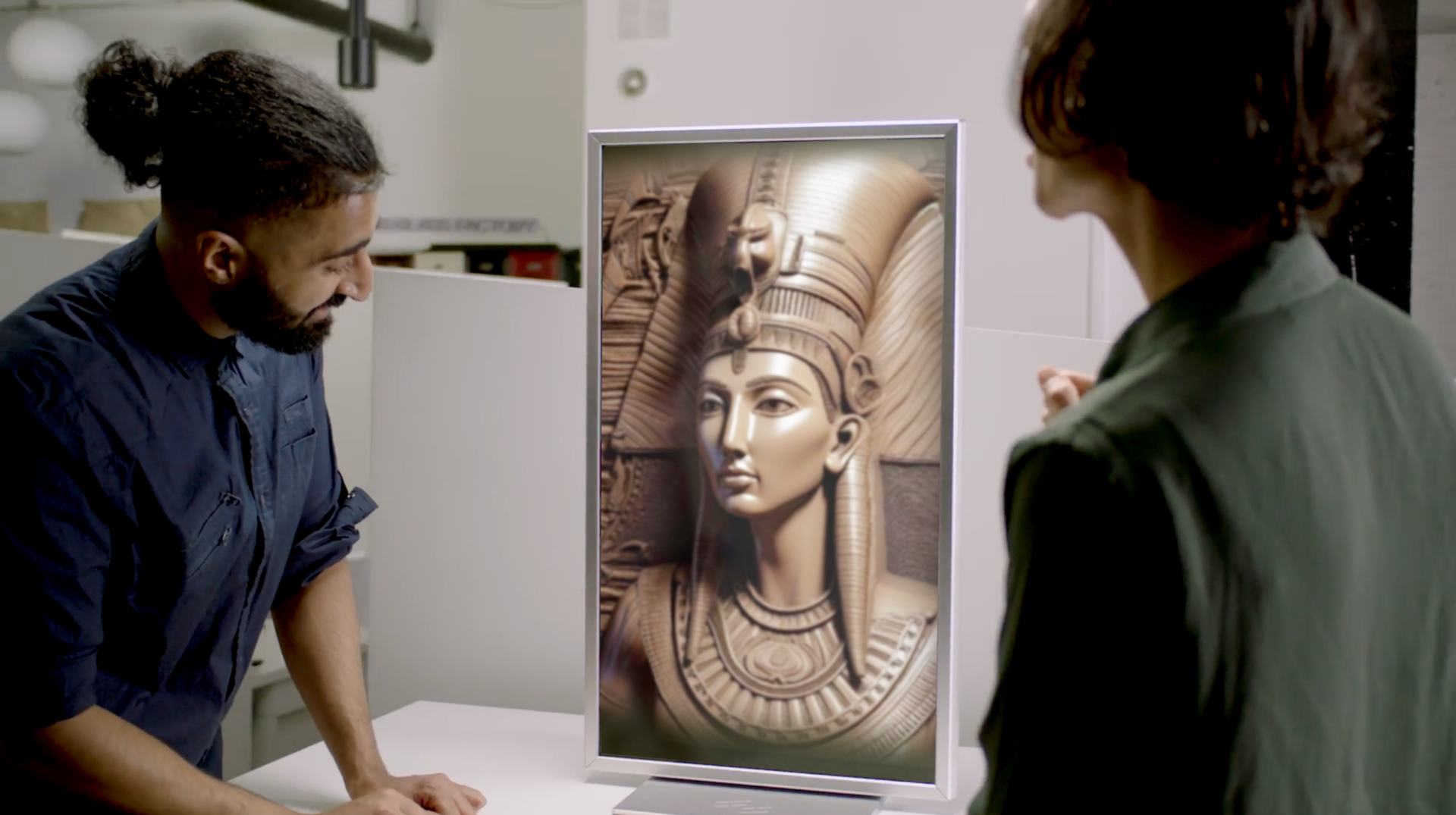This article is also available in:
![]() Français
Français
In 2018, Looking Glass made a name for itself with a Kickstarter campaign. The promise: “holographic” displays intended for the creation and visualization industries.
Six years later, Looking Glass continues its journey and announces that deliveries for its new generation of displays have begun. At the same time, the company appears to be drawing inspiration from Apple when it comes to marketing.
Enhanced Displays, New Uses
The new displays offer several improvements, including the ability to view content from multiple perspectives: in other words, several people can see the 3D display simultaneously. This is a key feature for professional applications.
The screens are designed to be viewed ideally within a 53° cone in front of them. Outside of this zone, the display quality diminishes. In practice, the more directly you face the screen, the stronger the 3D effect.
We should also highlight that some gesture-based interaction peripherals are supported.

Here are the main features:
- Improved level of detail compared to the previous generation (doubled pixel density).
- Thinner than previous models (31mm).
- Mobile app to change content and convert 2D images to 3D.
- Desktop app for importing, editing, and viewing holograms.
- 3D model viewer (supports FBX, OBJ, GLTF, STL, PLY, 3MF formats).
- Plugins/libraries for Unity, Unreal, Blender, WebXR, native SDK.
- Connectivity: HDMI, USB-C, WiFi.
Pricing is $4,000 for the 16-inch model The price for the 32-inch model is available upon request.

Notez enfin qu’une version compacte, le Go, est aussi proposée pour 300$. Les expéditions débuteront ce mois-ci.

Apple-Like Marketing
Having followed Looking Glass for many years, we couldn’t help but notice an evolution in their marketing approach. During the 2018 Kickstarter campaign, the term “holographic” was prominently featured, and Looking Glass emphasized that its screen did not require a VR/AR headset.
Fast forward to early 2024, Looking Glass launched a campaign for the Looking Glass Go, the small-format model mentioned earlier in this article. The brand then highlighted the use of the Go as a sort of 3D photo frame, with the ability to capture 3D portraits and scenes with a phone: either through automatic 3D conversion or with techniques like Gaussian Splats and NeRFs. The company used terms like “spatial photography” and “spatial video.”
The announcement of the beginning of deliveries for the new 16 and 32-inch screens continues in this vein. The screens are described as “spatial displays,” and expressions like “spatial computing” are used.
This shift in terminology closely mirrors Apple’s communication around its mixed reality headset, the Apple Vision Pro: the tech giant has been talking about “spatial computing” and “spatial videos” since the announcement (the term “spatial” appears nearly 20 times on the product page).
In other words, Looking Glass is deliberately adopting Apple’s vocabulary, likely seen as more trendy than terms like 3D display or even “holographic.”

